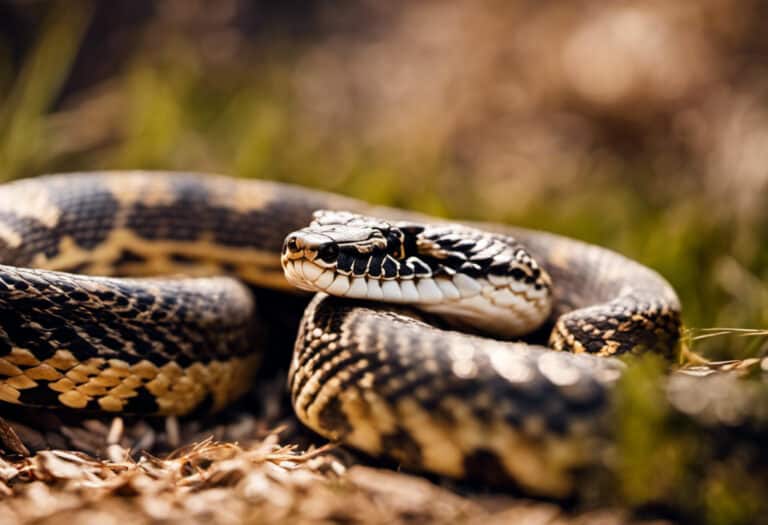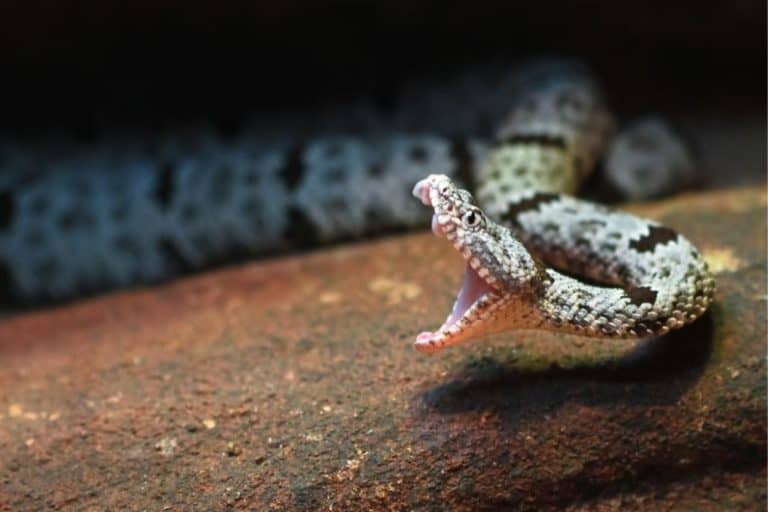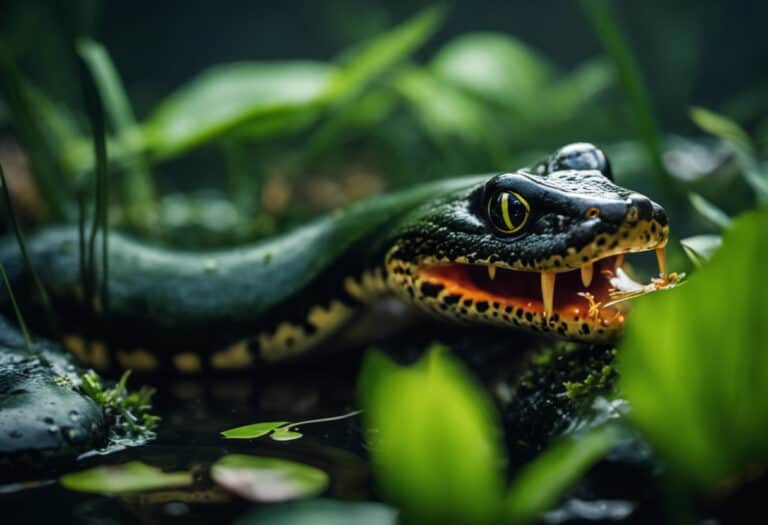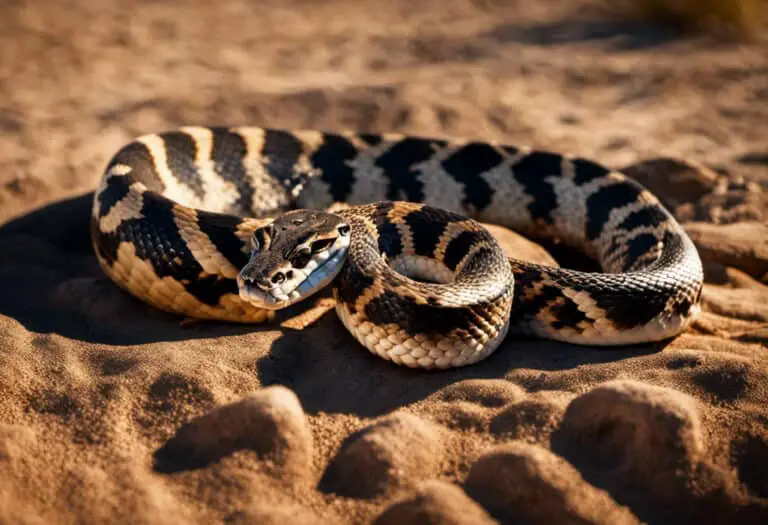Poisonous Snakes in Tennessee: How To Identify Venomous Serpents
Tennessee is home to several different types of poisonous snakes. These include the copperhead, cottonmouth, and rattlesnake. While all three of these snakes can deliver a potentially fatal bite, their unique physical characteristics can be easily distinguished from one another.
Types of Snake Bites:
When it comes to snake bites, there are a lot of variables that can affect how serious the bite is. In general, though, snake bites fall into one of two categories: dry bites and venomous bites.
- Dry bites are relatively common and usually not very dangerous. These bites typically occur when a snake is feeling threatened and wants to send a warning signal. Usually, only a tiny amount of venom is released, if any at all.
- Venomous bites, on the other hand, are much more severe. These bites inject a large amount of poison into the victim’s body, which can cause serious health problems. If you’re ever bitten by a snake, it’s essential to seek medical attention immediately to receive the appropriate treatment.
1) Timber Rattlesnake
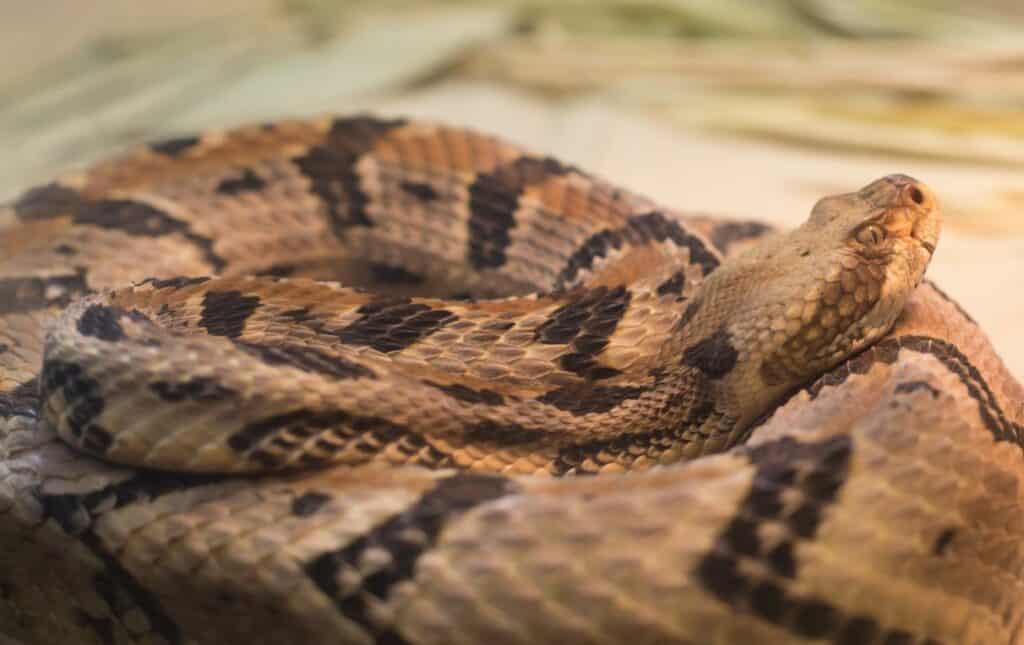
The timber rattlesnake, also known as the canebrake rattlesnake or the banded rattlesnake, is a large and highly venomous snake. It is found throughout the eastern United States, from Texas to Maine.
The timber rattlesnake is the largest of the six species of rattlesnakes found in North America, and it is considered the most dangerous of all the venomous snakes in Tennessee.
Adults typically reach lengths of 2.5-5 feet, and they can range in color from yellows and shades of brown to black.
The timber rattlesnake is a shy and reclusive snake that is rarely seen by humans. However, it is essential to be aware of this snake and to avoid contact with it if possible, as its venom can cause severe injury or death.
Bite Effect:
A timber rattlesnake bite can have several different effects on the victim. Some common effects are typically seen with this type of snakebite.
For example, the skin around the edge of the taste will often swell and turn black. This is caused by the venom necrotizing the tissue.
In some cases, this necrotized tissue will slough off as the skin heals. Another common effect of a timber rattlesnake bite is local pain and swelling.
This is usually due to inflammation caused by venom. In severe cases, victims may also experience nausea, vomiting, diarrhea, seizures, and even coma. If a timber rattlesnake has bitten you or someone you know, it is essential to seek medical attention immediately.
2) Cottonmouth Snake
The cottonmouth, also called a water moccasin, is a large, venomous snake native to the southeastern United States.
These snakes are pit vipers, meaning they have heat-sensing pits on their faces that help them locate prey. Cottonmouths get their name from the white coloration inside their mouths, which they display when they feel threatened.
These snakes are semiaquatic, meaning they are equally comfortable swimming in water and basking on land.
In fact, the cottonmouth is the only venomous snake in the United States that spends a significant amount of time in the water.
Adult cottonmouths typically grow 24-48 inches long, making them one of the most prominent members of the genus Agkistrodon.
Although they can deliver a painful and potentially dangerous bite, cottonmouths generally only bite humans when they feel threatened or provoked.
Due to their similar appearance, cottonmouths are often confused with nonvenomous water snakes.
Bite Effect:
A cottonmouth snake bite can have some pretty severe effects. Their venom contains enzymes that cause local tissue destruction and inflammatory response.
This can lead to severe pain, swelling, and difficulty breathing. In some cases, the skin may even start to discolor.
If a cottonmouth snake ever bites you, you must seek medical attention immediately. While most bites are not fatal, they can still cause serious harm if left untreated.
So if you see a cottonmouth snake, it’s best to go it alone!
3) Pygmy Rattlesnake
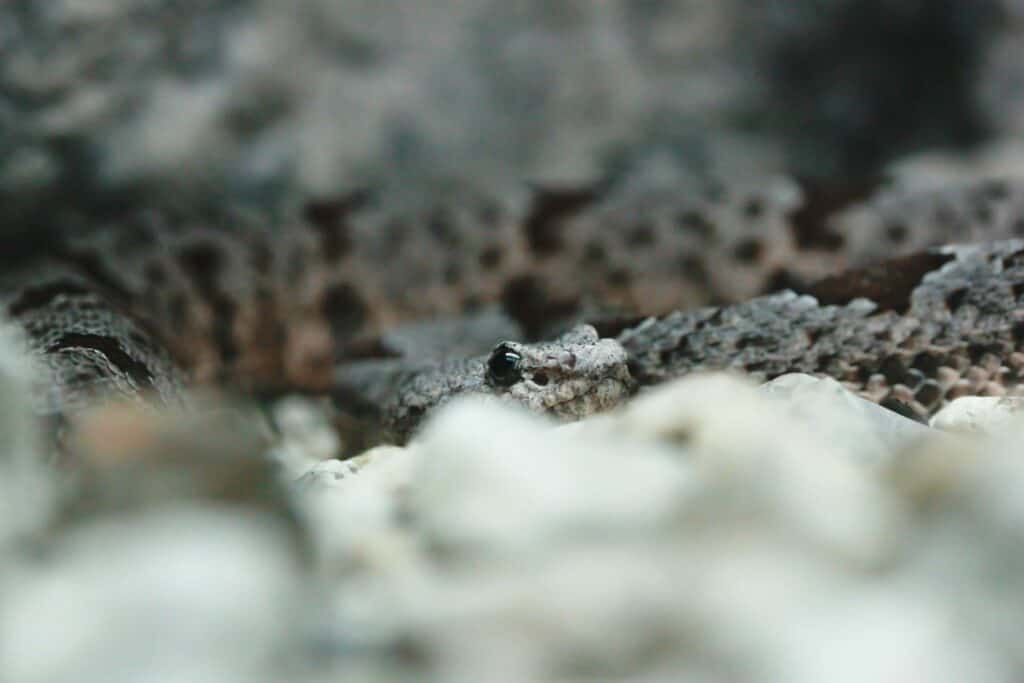
The Pygmy Rattlesnake is a small but dangerous snake found in the southeastern United States. It is usually only 1-1.5 feet long, but don’t let its size fool you. This snake packs a powerful punch.
The Pygmy Rattlesnake’s color is brownish gray with small dark brown or black blotches, making it difficult to spot in the foliage.
These snakes are notoriously shy and reclusive, so if you see one, it’s best to give it a wide berth.
Pygmy Rattlesnakes are found in various habitats, from marshy areas to woodlands to suburban neighborhoods.
While they are not aggressive snakes, they will bite if they feel threatened, so it’s essential to be aware of their presence if you’re hiking or camping in their territory.
Bite Effect:
Although their bites are rarely fatal, they can cause significant pain and tissue damage. The venom of a pygmy rattlesnake is hemorrhagic, meaning that it causes blood vessels to break down and bleed.
This can lead to necrosis, or the death of tissue, around the site of the bite. In some cases, people bitten by a pygmy rattlesnake may also lose a finger or toe due to tissue damage.
If a pygmy rattlesnake ever bites you, it is vital to seek medical attention immediately to treat the wound appropriately.
4) Copperhead Snake
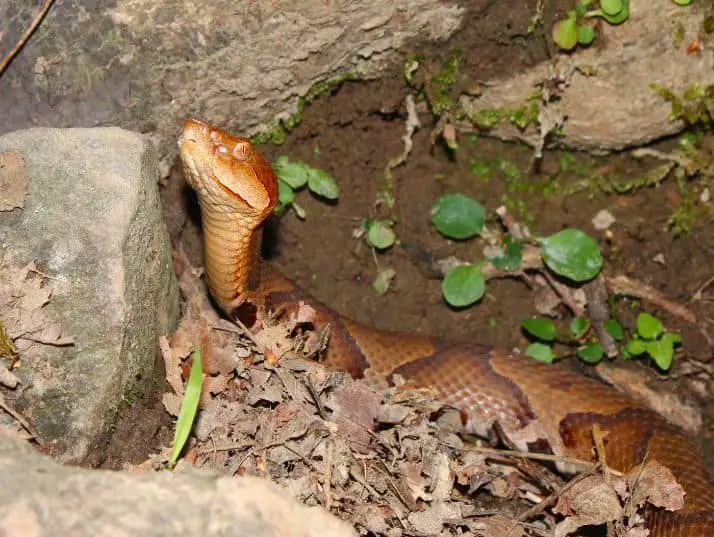
The Copperhead snake is a common sight in Tennessee. These pit vipers can reach up to three feet in length and are known for their copper-colored heads.
There are two subspecies of Copperhead snakes in Tennessee: the Southern Copperhead and the Northern Copperhead.
The Southern Copperhead is found in extreme West Tennessee, while the Northern Copperhead is located across the entire state.
Both subspecies have reddish-brown, coppery bodies and unmarked heads. The Copperhead snake is a “pit viper,” which means it has a heat-sensing pit between its eyes and nostrils.
This pit allows the snake to locate prey, even in complete darkness.
The Copperhead snake is venomous, but its bite is rarely fatal to humans. If you see a Copperhead snake, it’s best to leave it alone and give it a wide berth.
Bite Effect:
Immediately after being bitten, victims may experience redness, swelling, bruising, or bleeding around the bite site.
The pain is often severe and can last for several days. In some cases, copperhead bites can also cause nausea, vomiting, and diarrhea. If the venom spreads to the lungs, it can cause labored breathing and even death.
Thankfully, antivenom is available to treat copperhead bites, and most people who receive prompt medical treatment fully recover.
However, it is still essential to be cautious when outdoors in areas where these snakes are known to live.
What should I do if I get bitten by a snake?
If you’re lucky enough to have never been bitten by a snake, count yourself among the fortunate. Snake bites can be very painful and, in some cases, deadly.
So, what should you do if you find yourself on the receiving end of a snake bite?
- It’s essential to try to remain calm. It may be difficult, but it’s important to avoid panicking, as this can increase your heart rate and cause the venom to spread more quickly through your body.
- If possible, position yourself so that the bite is below the level of your heart. This will help to slow the spread of venom.
- Call for medical help as soon as possible.
You may need to hike out to find reception if you’re in a remote location. But in any case, it’s essential to get professional medical help as soon as possible after a snake bite.
FAQ:
Does Tennessee have a snake problem?
It’s no secret that Tennessee is home to many snakes. In fact, the state is home to more than 50 species of snakes, including both venomous and non-venomous varieties.
While most snakes are harmless to humans, some can be pretty dangerous. The state’s three most common venomous snakes, the copperhead, cottonmouth, and rattlesnake, are abundant in Tennessee.
As a result, snake bites are relatively common in the state. In fact, according to the Centers for Disease Control and Prevention, Tennessee ranks fifth in the nation for snake bite incidence.
However, it’s important to remember that most snakes are not aggressive and will only bite if they feel threatened.
As long as you’re careful around snake-friendly areas, there’s no need to worry about becoming a snake bite victim.
How many people are bitter in Tennessee?
Believe it or not, there are over 50 people bitten by snakes in Tennessee every year.
And that’s just the reported cases! It’s likely that many more people are bitten but don’t seek medical attention.

